Artists
Forget Paint: 7 Artists Share Their Most Unusual, and Valued, Art Supplies
These are the materials that artists couldn't do without.
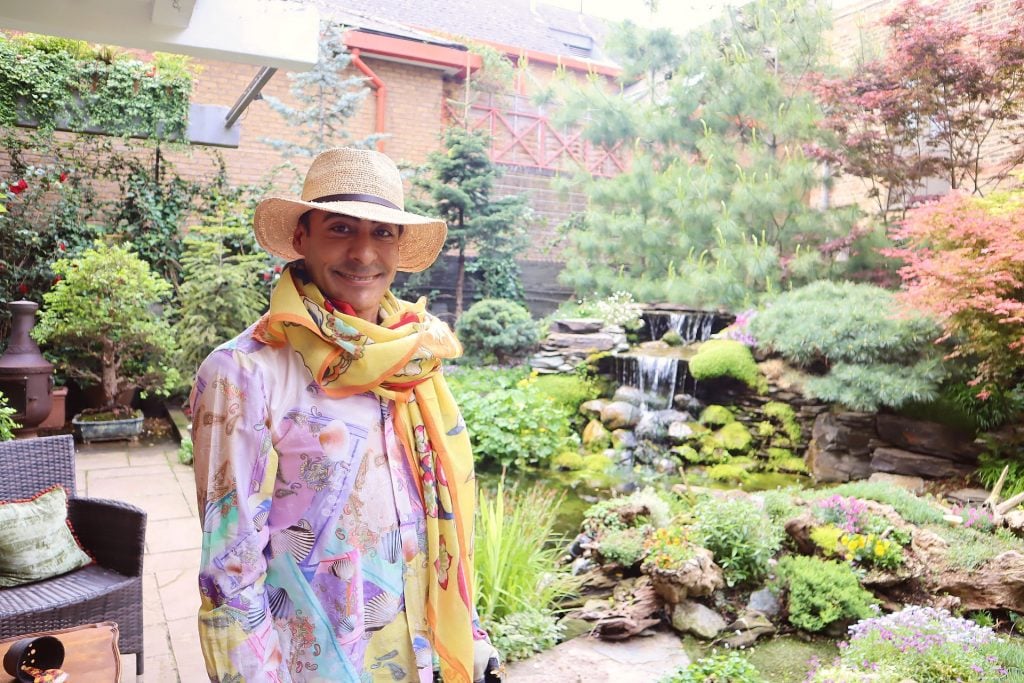
There are dozens of invaluable items in an artist studio, without which art could never be brought into being. Last year we shared the favorite supplies of ten artists making a splash in the industry, and we never get tired of asking individuals about the materials that make them tick. Read on for some of our favourite selections from this batch of creatives, from the humble ruler to the human heart.
Raqib Shaw: Porcupine Quills
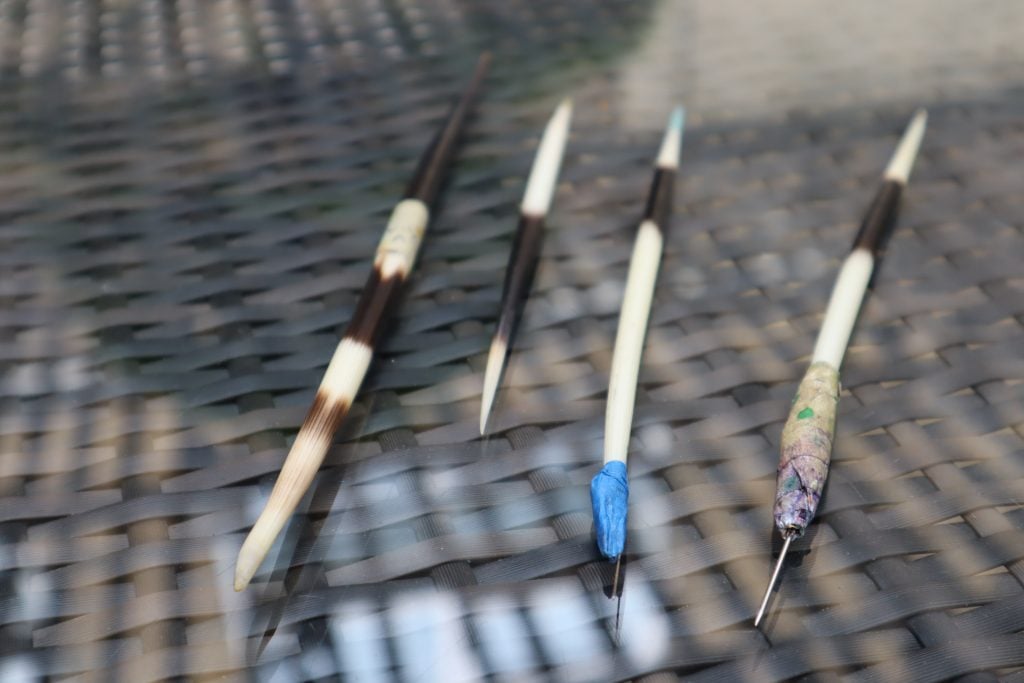
Porcupine quills at Raqib Shaw’s studio. Photo by Naomi Rea.
“The porcupine quills! I first started working with them when I realized I needed something small and splintery. It used to be matchsticks, in my college days, 20-something years ago. And then one fine day, when I was squatting in Percy Dalton’s Peanut Factory Studio in Hackney Wick, one of my friends—she’s dead now—sent me this package, and there was a little note from her that said: “These were left outside my tent in Botswana by some fighting porcupines, and I thought that they might help you with your paintings.” What a clever idea: the porcupine quill is light, it’s pointy, and you can sharpen it because it’s basically hair, so it gives you the most incredible control. I couldn’t do without it.”
Oliver Beer: The Voice
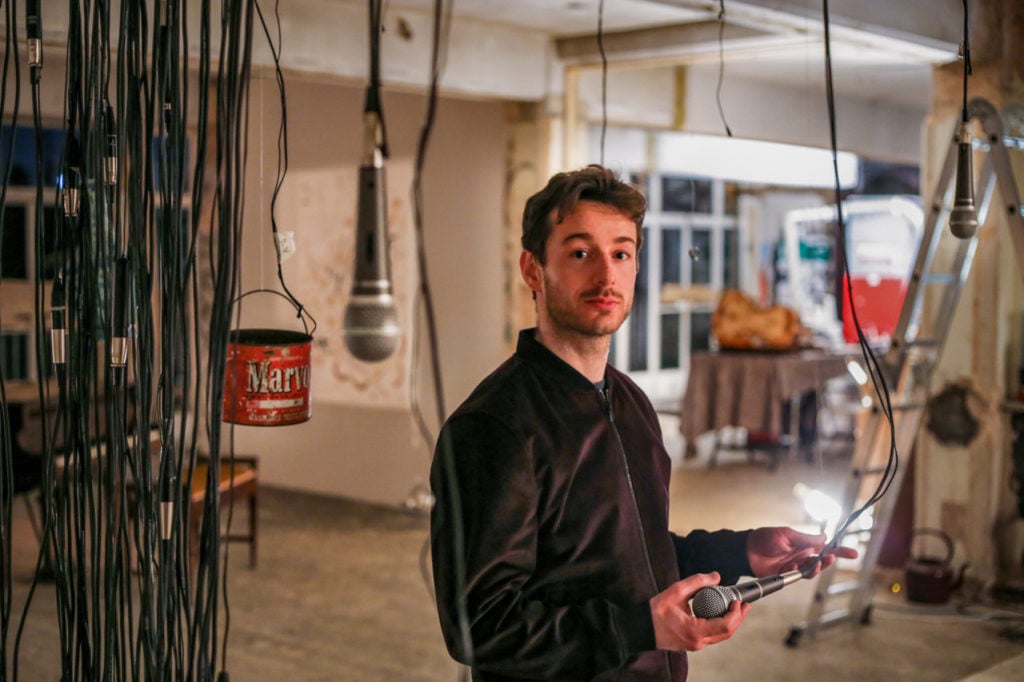
Oliver Beer. Photo courtesy of the artist.
“A lot of the work I’ve done is to do with the voice. Human voice is the most deeply charged, instrumental area. It’s a musical instrument, but it’s also your most fundamental means of communication. And what gets me about the voice when we talk to each other is that, like all those vibrations in the “resonance paintings,” our voices are doing the same thing in the air between us. So we’re actually constantly sending geometry and form at each other, and our brain interprets that geometry as intelligible sound.”
Baseera Khan: The Heart
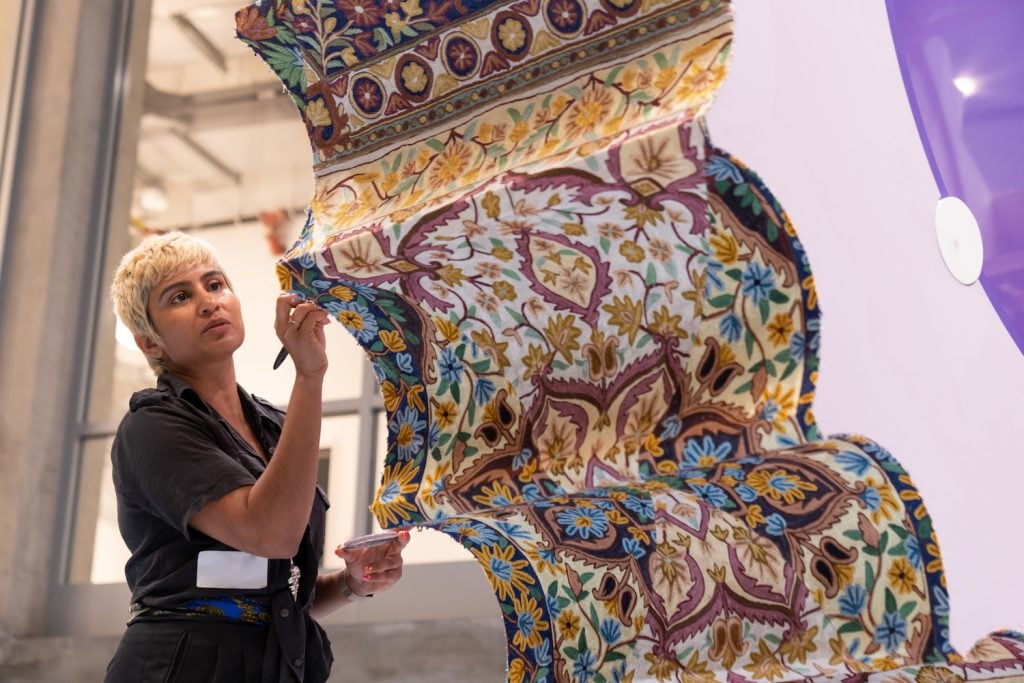
Baseera Khan. Photo by Bradford Devins / OWLEY.
“My heart. But for real, I use so many different materials and often have work fabricated too, so I really rely on my heart to tell me what’s good—my heart is my favorite tool. I do a lot to protect my favorite tool. I use sound to stimulate and open up my creativity. I watch artist lectures and documentaries on YouTube. At the moment, I am watching The Andy Warhol Diaries. It was wild to see certain scenes filmed at the Brooklyn Museum while my exhibition was still installed right next to Andy Warhol on the fourth floor. It feels like I am always close to something chimerical and deep.”
Rose B. Simpson: A Sacred Sculpting Knife
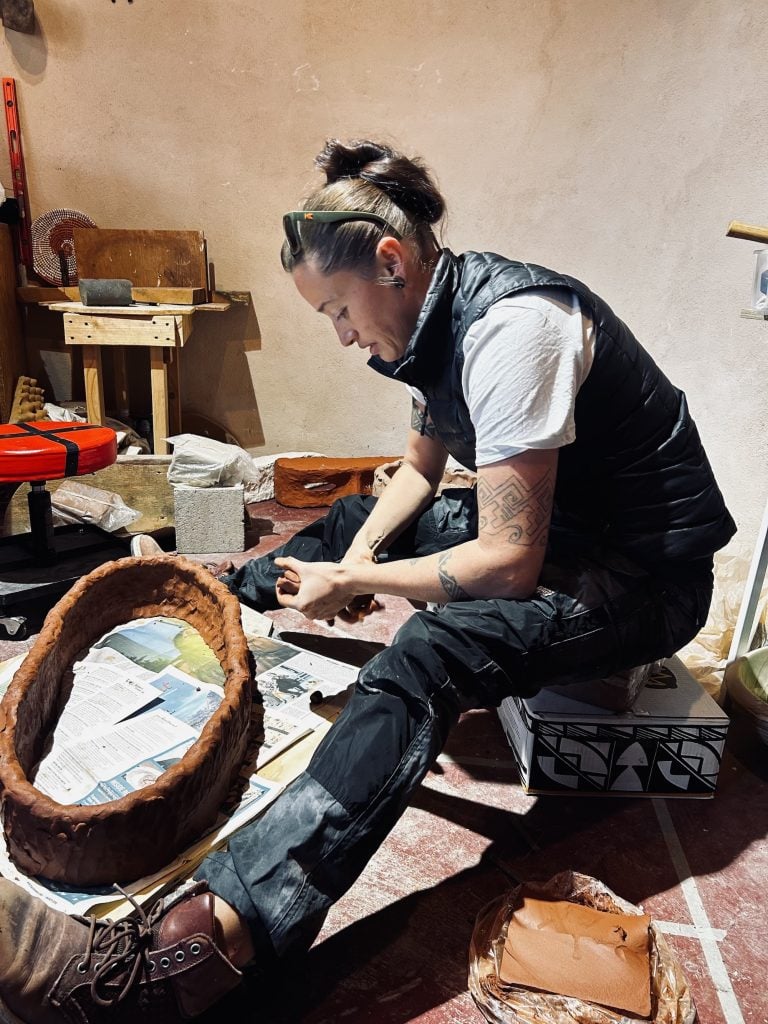
Courtesy of Rose B. Simpson.
“When I was a kid, my mom had a sculpting knife that had turned into something sacred. Someone recognized that and stole it when she was giving a workshop, but remembering it gives me butterflies. I now have my own sacred sculpting knife—something that works perfect, does what I need it to, fits right in my hand, and becomes an energetic tool that is a piece of me.”
Pamela Phatsimo Sunstrum: The Eraser
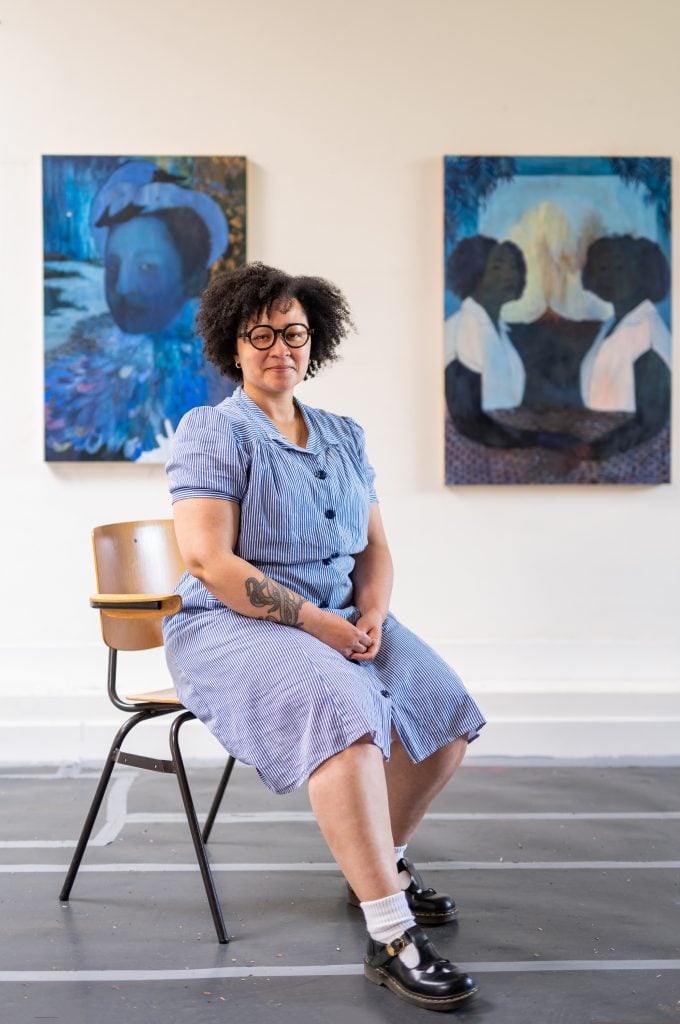
Pamela Phatsimo Sunstrum. Photo courtesy of the artist.
“I think the tool that is most often in my hand in the studio is an eraser. I enjoy allowing the provisionality of drawing to be evident in my work. There is a history of the struggle, the gestural, and the performance of drawing that gets captured in each attempt at erasing, and over time I think this creates an important ground from which I build the work.”
Jeffrey Gibson: Rulers
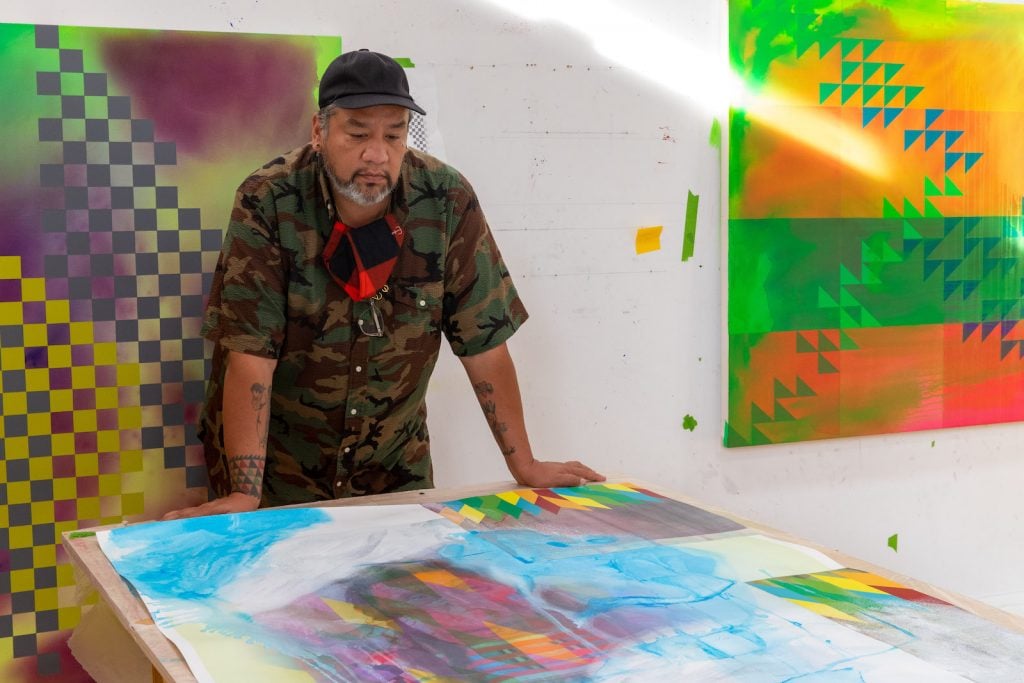
Jeffrey Gibson. Photo courtesy of the artist.
“Recently, I’ve really gotten into rulers. There’s a lot of geometry in the painting. The rulers—when you get one that actually is made for what you’re doing—are kind of incredible and keep everything in order. I also absolutely have to have music. Some people in the studio play really great music.”
Christina Quarles: Home Depot Five-Inch Stain Brush
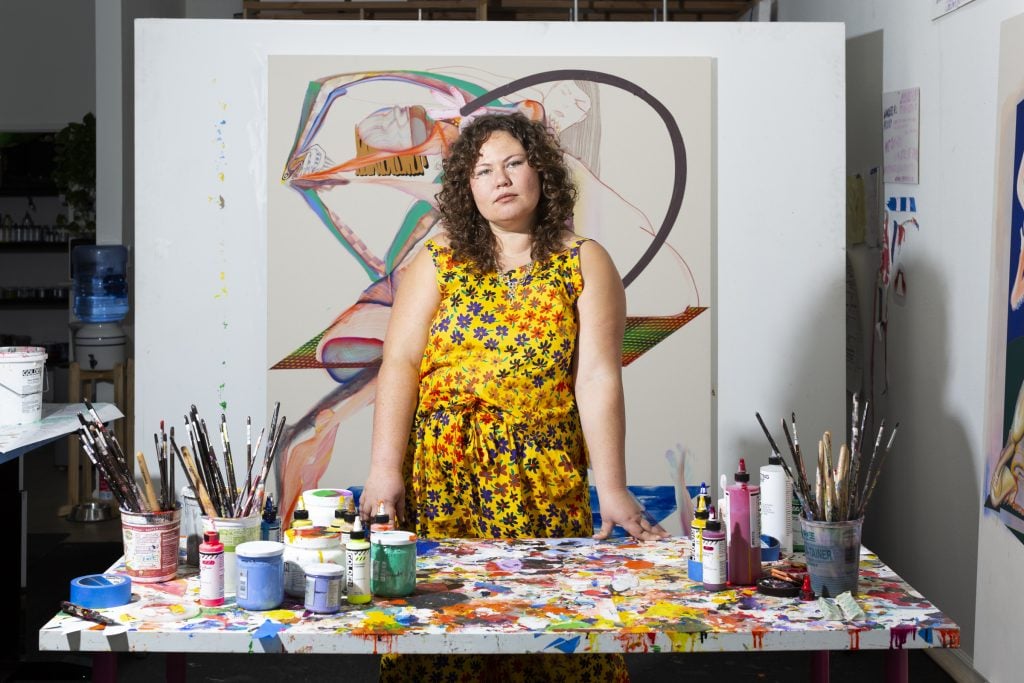
Christina Quarles. Photo courtesy of Pilar Corrias, London, Photo by Ilona Szwarc.
“There’s one item that I went to great lengths to acquire while being here. And it’s something that if I had known how important it was, I would just have packed it with me. It’s this five-inch stain brush that they don’t make in the U.K. I could not find it online. I tried every substitute of brush and I bought like a million more trying to replicate it.
It’s weird because it was this thing that I just randomly picked up at a Home Depot in Los Angeles for like $4 and thought, “Oh, this will probably work.” And little did I know that it was the only brush that would work for this specific technique I wanted.
Everything else I’ve been able to sort of figure out and make do. But this was the one thing where the first group of friends I had come to visit us, I asked them to go to Home Depot, pick up two of these brushes, put them in their suitcase and bring them to me.”





